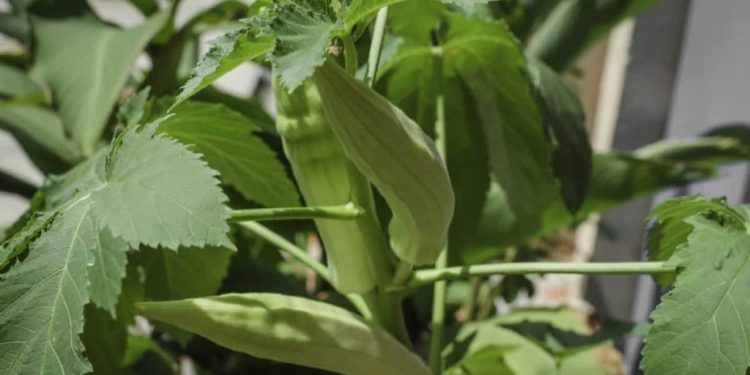Okra plant is an herbaceous annual plant belonging to the Malvaceae family grown for its edible seed pods. Okra plants have short erect stems that can be hairy or hairless with heart-shaped leaves. Okra is also a surprisingly attractive crop. It is related to the hibiscus, meaning its flowers look like plants. For specific planting information, see our Okra growing guide for getting more harvest.
How to grow Okra from seed to harvest
Can the Okra plant be grown indoors?
Okra usually starts indoors in a greenhouse, warm, well-lit sunroom, or kitchen. Sow Okra in individual pots of light potting mix 4 to 6 weeks before you intend to set plants out. Sow Okra seeds in peat pots if planted indoors. Plant 2 seeds in each pot. After the germination process, thin to one plant per pot. Okra transplants can be grown indoors or purchased from a local greenhouse. Start transplanting about 2 to 3 weeks before planting, ideally about two weeks after your last frost-free date in the spring.
Does Okra need full sun?
Okra thrives in full, bright sun. Regular watering is required and is essential during flowering and pod development. During extended dry spells, a weekly deep soak is beneficial. Good soil management and crop rotation help to control diseases in Okra plants. Okra thrives in full sun, place the plant in a spot that gets 5-6 hours of sunlight, or it will not produce much fruit. Okra should be grown in fertile, well-drained soil in full sunlight for good yields.
How long does it take to harvest Okra for the first time?
The Okra plant will produce large flowers about 2 months after planting. Okra pods will be ready to pick up after 3 to 4 days. The fruit should be harvested in the morning and evening. However, harvesting Okra can be tricky because you have to harvest the pods before they harden. As all the Okra fruits do not ripen simultaneously, harvesting is done once in 3-4 days. Frequent picking promotes fruit development and prevents pods from becoming too large.
Can I grow Okra from fresh seeds?
Yes, fresh Okra seeds can be easily used to grow new Okra plants. However, successfully growing Okra requires a little preparation. Place your Okra seeds in the freezer and let them chill overnight.
How many varieties of Okra are there?
Some important varieties are Dwarf, Cow Horn, Emerald, Go Big, Hill Country Red, Louisiana Green Velvet, Perkins Long Pod, Red Velvet, Burgundy, Cajun Delight, Clemson Spineless, and Louisiana Green Velvet.
How do I make my Okra bushy?
- Fortunately, Okra is a very hardy plant that tolerates heavy pruning and pinching topromote short, bushy growth. Plan to remove the tops of the Okra plant at least twiceduring the growing season.
- Promoting bushy growth in the Okra plant is easy, but a case must be made forpracticing different pruning methods with this prolific vegetable.
- Making Okra “leggy” instead of bushy can make pruning and mowing around plantseasier for weed control.
- This heat-loving, fast-growing, bushy plant can grow up to five feet tall and produceedible pods that can be easily harvested and used in kitchens worldwide.
How many Okra can one plant produce?
Okra plants can produce above 20 – 30 pods per plant if your plants have ideal conditions. Ina warm hardy zone such as zone 9b, your growing season will be in the fall or longer.
What is the average yield per acre of Okra?
- Okra productivity is a function of Okra number per unit area, several fruits per plant,and fruit size.
- Neem cake and chicken manure help in plant growth and improve yield in this crop. Itis possible to reduce manure use by neem cake and poultry manure or other fertilizers.
- Okra should be cultivated when the fruits are bright green, the pods are fleshy, and theseeds are small. After this period, the pods become thin and hard, and the green colorand mucilage content decrease.
- The average yield of Okra is about 40 to 48 quintals per acre.
How much is the Okra seed rate per hectare?
- Okra requires about 3.5-5.5 kg seeds per hectare in summer and 8-10 kg seeds per hectare in the rainy season.
- Generally, the seed rate in Okra varies with germination percentage, spacing, and season.
- Soak the seeds in Bavistin (0.2%) solution for 6 hours before sowing.
Can Okra be grown in pots or containers?
To grow Okra in pots, start with a large enough pot, at least 10 to 12 inches (25-31 cm) in diameter. A wide-bottomed pot is best as the plant can be top-heavy. Make sure the bottom of the selected pot has a drainage hole. Because of its taproot, you will need to plant the seeds directly into a container or biodegradable pot. Sow 2 to 3 Okra seeds about 1/2 to 1 inch deep in each pot.
Water with a sprayer and place the seeds in a bright, warm place; the substrate should remain moist until the seeds germinate. Like most vegetables, Okra is suitable for container gardening. To start growing Okra in pots or containers, choose a large pot made of the material you prefer. The container must be at least three gallons or larger.
Is it profitable to grow Okra?
- Okra, also called ‘Lady Finger’ or ‘Bhendi,’ is one of India’s most loved and healthy vegetables. Okra cultivation is more profitable if done at the right time.
- Okra farmers can earn income with minimum investment.
- It is grown in places where the crop will receive sunlight throughout the day.
- This popular vegetable is found in both home and commercial gardens. Okra can be a profitable crop.
How do you soak Okra seeds before planting?
Okra can be seeded in the garden as late as July and still produce a good crop in late summer. Soaking Okra seeds in warm water overnight can help speed up the germination process but is not necessary. Before planting, soak Okra seeds in water for 12 to 18 hours to soften the hard seed coat. Soaking helps in moisture absorption and germination. Plant Okra in spring or early summer after the danger of frost has passed.
In case you missed it: Okra Farming Cost, Profits (Bhindi) – A Project Report
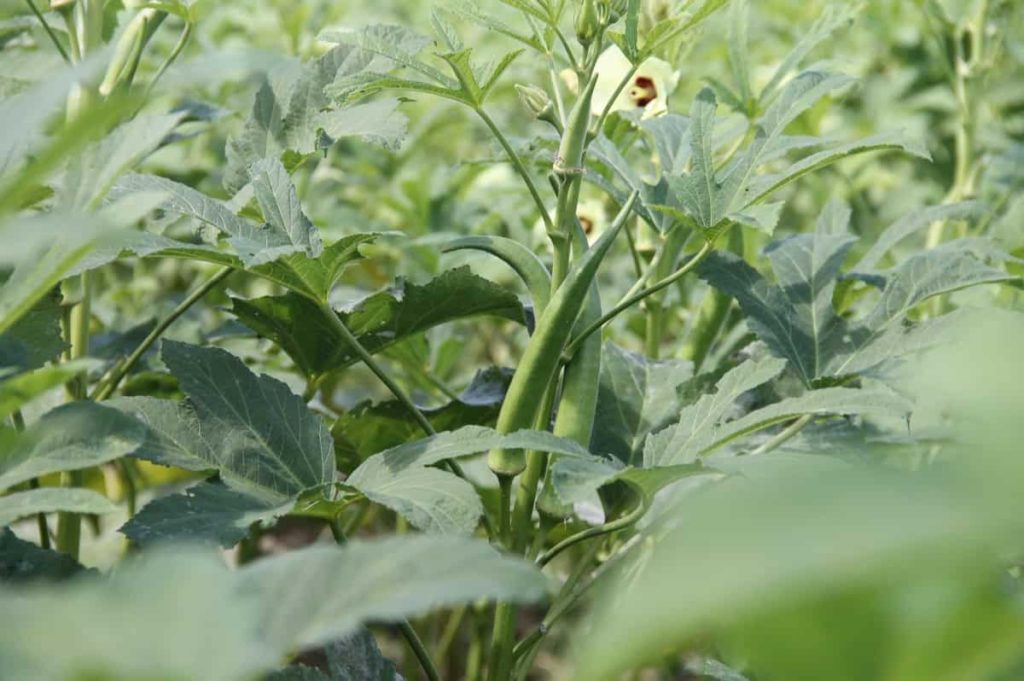
To prevent the Okra seeds from rotting, the soil should be warmed to at least 18°C. Soak Okra seeds in hot water (about 40-50°C) for 12 hours. At the end of the immersion, if any seeds are still floating, discard them. Take the seeds using a sieve and wash them with clean water (boiled water).
Do Okra plants come back every year?
It is a perennial but is grown as an annual plant in temperate climates.
How do you maintain Okra plant growth?
- For a successful harvest, plant only in areas with warm day and evening temperatures during summer. Select a site in full sun with healthy soil and plenty of room. Keep your Okra plant hydrated.
- Okra will need only a light side dressing of fertilizer during the season for the best yield if the soil is well conditioned. Foliar sprays are also effective in Okra plants. Liquid seaweed sprays can be applied 2 or 3 times during the season.
- Water your Okra plant daily to help it retain water throughout the day. Thin them out and space them when they are about 3 inches tall. Thin out the younger plants and leave the stronger ones intact. Keep your plant away from unwanted insects and weeds. To keep pests at bay, use a household insecticide and keep your plants in good condition.
- If you plant your Okra in full sun, you will have the strongest plants and the most pods. It means six hours of direct sunlight on most days. If you have organically rich soil, you won’t need additional fertilizer. Side dressing with compost or feeding the plants with seaweed/fish compost will provide extra fuel.
What is the fastest way to grow Okra seeds?
To speed up the germination process, soak the seeds in warm water for a few hours before sowing. Plant Okra seeds in rows 1/2 to 1 inch deep and 12 to 18 inches apart. You can also speed up the germination process by soaking the Okra seeds in warm water overnight.
How can I grow Okra faster?
- Okra seeds soak overnight to encourage germination, which takes a week or so.
- By covering, you can plant seeds early in the season and encourage faster germination. The rows with black plastic. It also encourages rapid early growth.
- Ensure optimal growing conditions like sun, space, soil, and water.
- Give your Okra plants plenty of nutrients.
- Plant high-yielding Okra varieties.
How often should I water Okra?
Okra likes heat and can tolerate drought, but do your best to water the plants 1 inch each week. Harvest pods when they are about 2 to 4 inches long. An inch of water per week is ideal, but if you are in a hot, dry area, use more. High heat can slow Okra growth. Cut the tops off Okra plants when they are 5 to 6 feet tall. Water the Okra plant every morning to thoroughly moisten the soil, except during heavy rains. Okra can withstand drought but does much better when given plenty of water in summer.
Why are Okra leaves turning yellow?
Okra plants are also susceptible to yellow mosaic virus, a disease transmitted by whiteflies. Plants affected by this viral disease will display leaves with a yellow network of thickened veins that may be completely yellow. Yellowing Okra plants indicate potentially devastating problems. Yellow leaves lack chlorophyll, which converts sunlight into food for the plant. As a result, okra‘s natural resistance to pests and diseases decreases as the plant dies.
Yellow colored leaves of Okra plants indicate the fact that the leaves do not have an adequate amount of chlorophyll to sustain their life. You will know that chlorophyll is a catalyst that takes incoming sunlight and converts it into a form that plants can eat. As a result, the ability to stand strong against some plant diseases and other bacteria gradually decreases to the point where you can no longer survive. Something similar happens with Okra plants.
In case you missed it: Red Okra vs Green Okra: Which Makes You Rich?
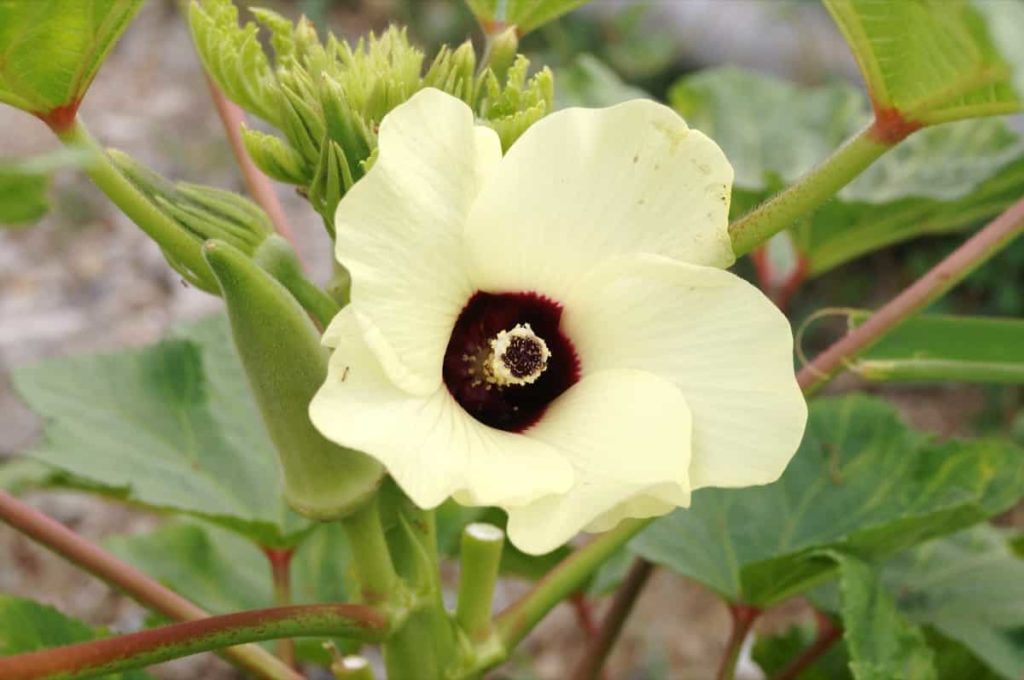
The plant leaves become susceptible to pests and diseases, thus reducing its natural resistance or immunity to fight, resulting in its death. While some main causes of yellowing Okra leaves can be addressed immediately, such as saving them before dawn, other causes require professional or long-term intervention that can be troublesome for gardeners.
Can Okra be planted next to tomatoes?
Another plant you can grow with Okra is Tomatoes. When companion planted, tomato acts as a trap crop, drawing stink bugs away from Okra plants. In addition to fruits and vegetables to pair with Okra plants, flowers can be a great option to increase pollination in the area.
Some of the Okra’s best garden companion plants are that, like Okra, need plenty of water. It includes Cucumbers, Melons, Eggplant, and Sweet or Hot Peppers.
Is Epsom salt good for Okra?
Some add Epsom salt to the Okra, but this is not universally recommended. Epsom salts are made from sulfur and magnesium. However, caution is needed when applying Epsom salt to Okra, as it can quickly kill Okra plants if used over-applied.
Is chicken manure good for Okra?
Applying organic fertilizer (chicken manure) significantly increased the growth and yield of Okra compared to chemical fertilizer (urea).
Why is my Okra plant stunted?
The root-knot nematode can be a severe problem with Okra. If a plant is stunted, yellow, or not producing at full potential, pull the plant out of the ground and check for leaves on the roots. These worms are caused by nematodes, which are microscopic worms. Root knot is a type of nematode that causes cankers or swellings on the roots of plants. It restricts the nutrients from the root system to the plant, resulting in the yellowing of the plant.
The root-knot lives in the soil and can survive on many weed and vegetable crops. It is best done by planting solid stands of marigolds (close enough to overlap the root systems) three months before the first fall frost and planting cereal rye (Elbon) for a winter cover crop. Cereal rye should be cut and incorporated into the soil 30 days before spring planting.
What can you do with leggy Okra seedlings?
Provide more light as soon as possible. The best way to cure leggy plants is to give them more lightly. It could mean if you’re not already using one, upgrading to stronger light, or lowering your existing light closer to the plants, so it’s more effective. Also, you can plant leggy plants deeper into the soil to help compensate for the extra-long stems. However, avoid the temptation to plant them too deep right away when they are still very young and tender.
What kind of fertilizer do you use for Okra?
- Okra should be pruned or cut 6 to 12 inches above the soil line. Once the plants are cut back, gardeners want to fertilize with a fertilizer with a 1:2 ratio of nitrogen to potassium, encouraging new growth and stimulating flower production. Although Okra grows easily at first, it helps to enrich the soil to help it produce throughout the seasons. As mentioned, Okra grows well in different types of soil. It helps to start with quality soil; for maximum growth, sprinkle with organic fertilizer 4-6 weeks after planting.
- If you don’t have livestock, you can buy well-rotted, old manure from horses, chickens, cows, etc. The application of organic fertilizers will help increase the yield of pods.
- Fertilizing the plant around mid-season will boost it, so it continues to produce. Especially in mid-season, when Okra plants are 18 – 24 inches tall, they will benefit from a nitrogen-rich organic fertilizer.
- The Okra plant requires a lot of energy to make seed pods. Feeding additional nutrients will help ensure optimal growth and help the Okra plant to produce throughout the season.
How often should Okra be fertilized?
Once the plants reach about 6 inches in height, you only need to apply a water-soluble fertilizer every 4-6 weeks. Apply a balanced granular fertilizer before planting Okra seeds. We spread it on the soil, water it well, and then till the soil one last time before planting. When harvesting the Okra plant begins, sprinkle a small amount of nitrogen around each plant. Avoid heavy nitrogen applications, which can stunt plant growth and reduce crop yields.
In case you missed it: Growing Okra in Australia: At Home, Planting Season, and Guide
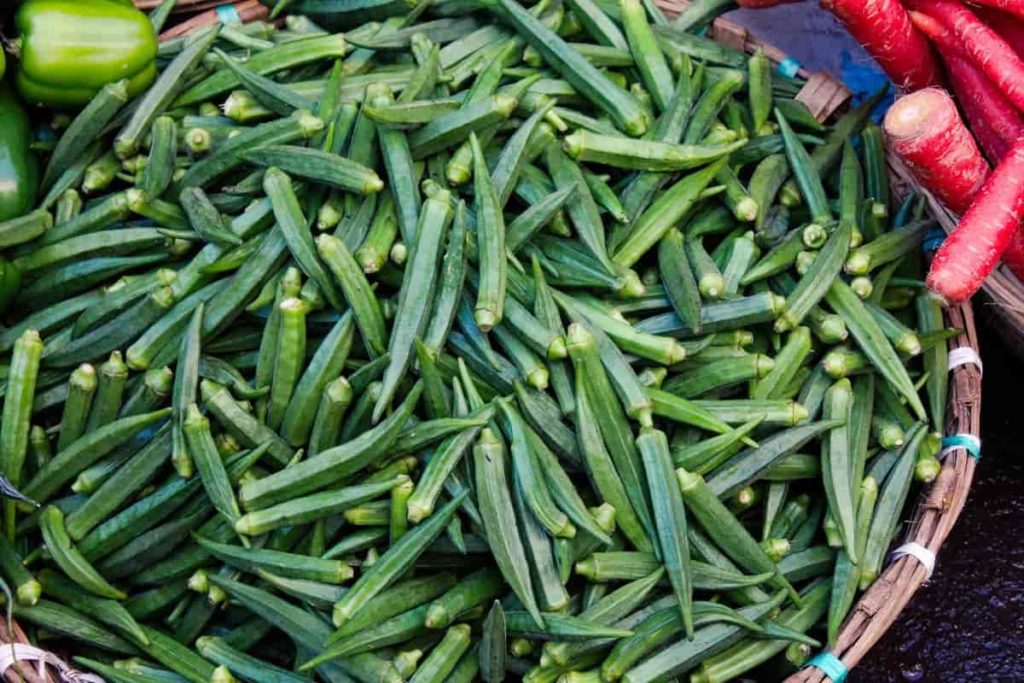
Does Okra grow well in containers?
You can grow Okra in containers. Suppose you start them directly from seed and plant three Okra seeds. As they grow, cut back two weak plants. It is best to develop one Okra plant per container. Growing Okra in containers means placing them on a patio, balcony, deck, outside your door, and any small space. You can also take advantage of keeping them in ideal conditions. You may have fewer critters and bugs when you grow Okra in containers.
Why is my Okra growing so slowly?
Unopened Okra can suffer from dehydration. Okra is more drought tolerant than many plants, but watering it will keep it healthy and can be more productive. It prefers fertilizers that are higher in phosphorus than nitrogen. The Okra plant may slow down production during summer’s hottest and often driest parts.
What is the best time to plant Okra?
The best time to plant Okra depends on where you plan to grow it. When growing Okra outdoors, plant it in April or May when night-time temperatures do not fall below 15°C. Though, in a greenhouse, you can grow Okra all year round.
How many times can Okra be harvested?
As all the Okra fruits do not ripen simultaneously, harvesting is done once in 3-4 days. Frequent picking promotes fruit development and prevents pods from becoming too large.
Can Okra plants survive the winter?
Okra plant will not grow in cold temperatures and needs warm air and soil temperatures to grow and thrive.
Is urea fertilizer good for Okra?
The increased growth and yield of Okra with urea fertilizer and goat manure is due to the increased availability of organic matter and nutrients in the soil. Okra fusarium wilt is a likely culprit if you’ve noticed wilting of an Okra plant, especially if the plants perk up when temperatures drop in the evening. Your plants may not die, but the disease delays growth and reduces yields when it’s time to harvest.
Is Okra easy to grow?
Growing Okra from seed is very easy. It prefers full sun, average moisture if possible without letting the soil dry out completely, and good soil drains well. A neutral soil between 6.5 and 7.5 is preferred. Keep your Okra plant hydrated.
Water your Okra plant daily to help it retain water throughout the day. Thin them out when they are about 3 inches long. Thin out the younger plants and leave the stronger ones intact. Keep your plant away from unwanted insects and weeds. Okra is a very hardy plant that will grow well in good soil. To keep weeds down, do some shallow cultivation near plants as needed.
How much time does Okra take to grow from seed?
Okra seeds germinate within seven days and need about 48 to 60 days to maturity, depending on the variety. The plants and pods grow very quickly and must be picked every day or two to prevent the pods from becoming large and stringy.
In case you missed it: Fertilizer Management for Okra: Dose, NPK, and Schedule
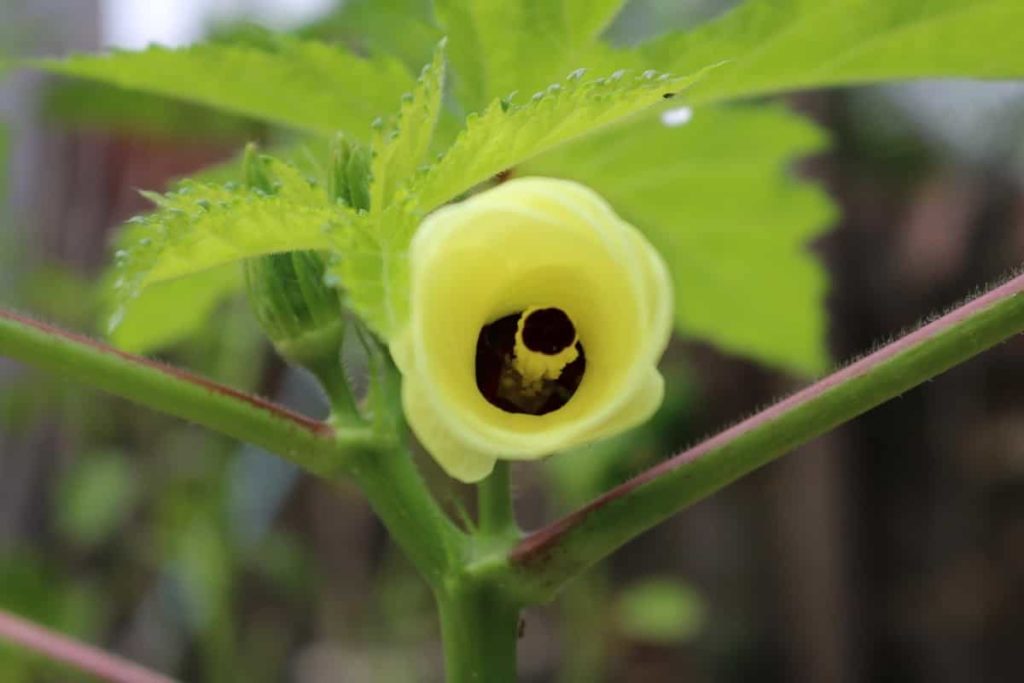
Do you have to prune Okra plants?
Once the Okra leaves can no longer produce food for the plant, the plant begins to get rid of them. Leaves begin to take more energy than they produce, so yes, cut off any small dying leaves near the bottom of the plant and any that look weak or are beginning to rot. Pruning your Okra plants allows you to train your plants, improve the quality of the Okra and limit its growth if necessary.
This pruning technique causes buds to grow on the main stem and produce a secondary, late crop. Prune dwarf Okra varieties in the same way to rejuvenate the plants. This pruning gives the Okra a chance to produce more Okra pods. You can promote your Okra plants in hotter areas by cutting them back to about two inches above the secondary buds. It encourages the plant to flower a second time as new growth emerges from the pruning. After harvesting, you can also fertilize the plant to help it grow.
What are the important pests and diseases of Okra?
Many pesticides are available at garden centers for homeowners to use. Organic options include sulfur and Bt-based pesticides. Sulfur has fungicidal properties and then helps control many diseases. Before using a pesticide, carefully read the label and follow the caution, warnings, and directions.
The major diseases on Okra are most severe in cloudy, damp weather. Check the Okta plants daily and treat them with an approved fungicide if diseases appear. Sulfur, neem oil, and other fungicides are available for use. Always carefully follow label directions. Aphids, stink bugs, and corn earworms are common diseases. If your plant faces this problem, we recommend using “neem oil.” Neem oil can completely eradicate diseases; it also helps in keeping plants healthy.
Okra rarely suffers from pests or diseases. Hand-pick any stink bugs that appear as they can cause the beans to disfigure. Corn earworms, cabbage loopers, aphids, and flea beetles can also be a problem. Fusarium wilt, a soil-borne disease, is sometimes a problem in warmer regions. If the disease causes the leaves to turn yellow and wilt, pull up and destroy the affected plants. Crop rotation is the best method to control Okra plant diseases.
In case you missed it: Top 15 Ways to Boost Okra Crop Yield: How to Increase production, Quality, Methods, and Tips
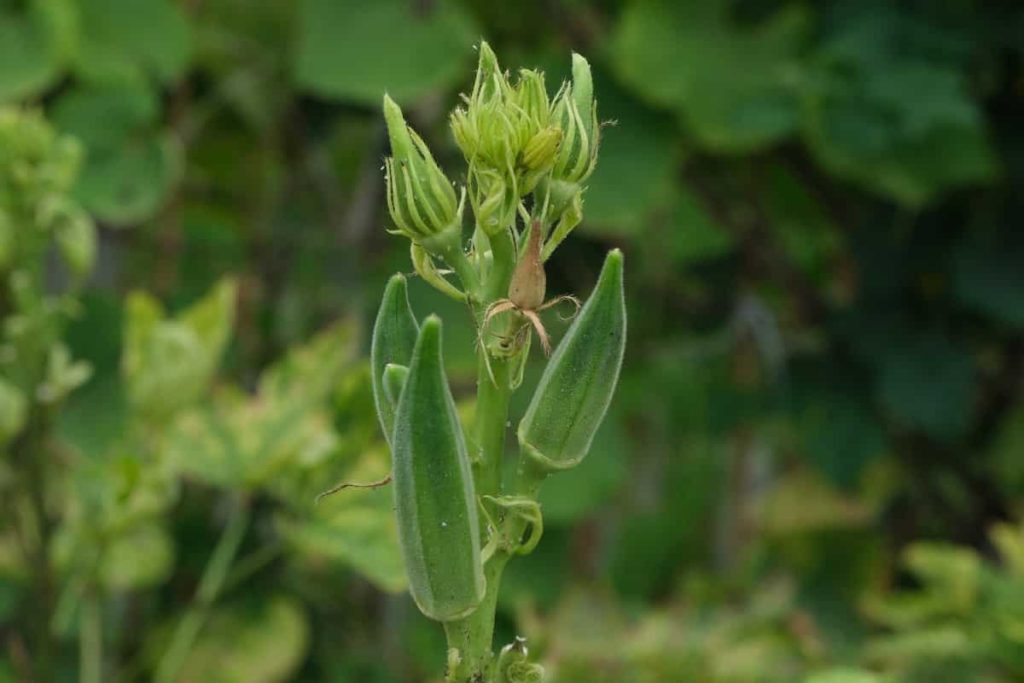
What is the best method to harvest Okra?
An important part of how to grow Okra is harvesting it at the right time to get the best pod flavor. Use scissors or lift them just above their caps. Once you bite, another pod will start growing from the same spot. Continue harvesting Okra until the plant stops producing. Harvest Okra when the seed pods are 1 to 2 days old and 2 to 4 inches long. They appear about two months after planting. Cut the stem above the cap by using a knife. If the stem is too hard to cut, the Okra pod is probably too old and should be thrown away.
A source: https://www.agrifarming.in






























